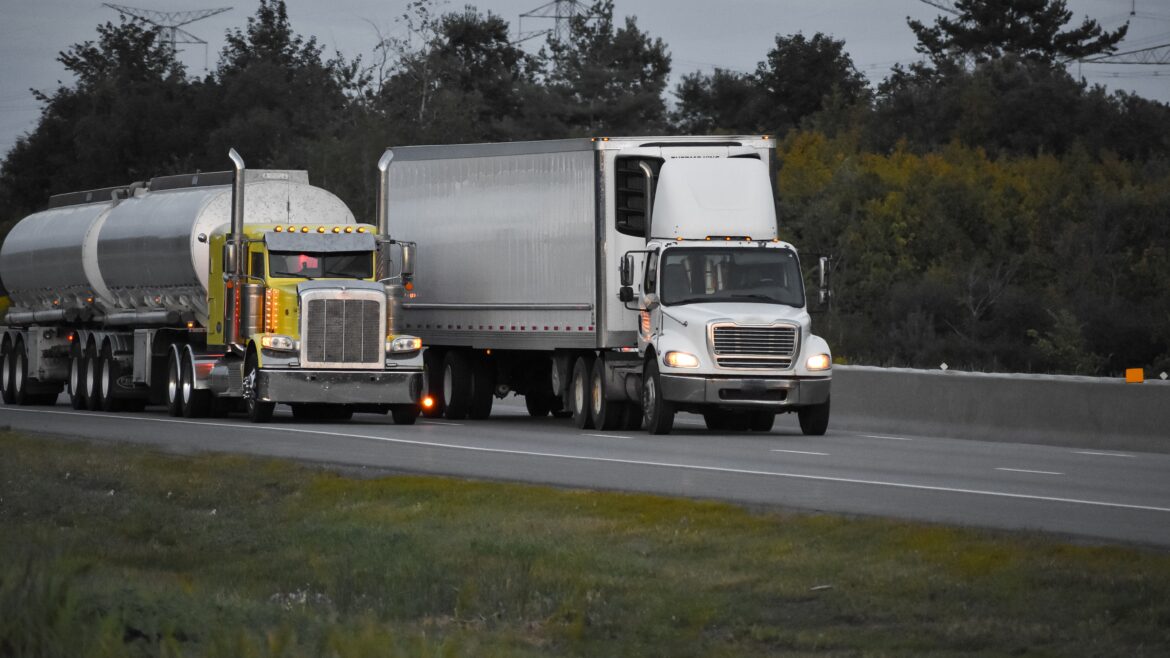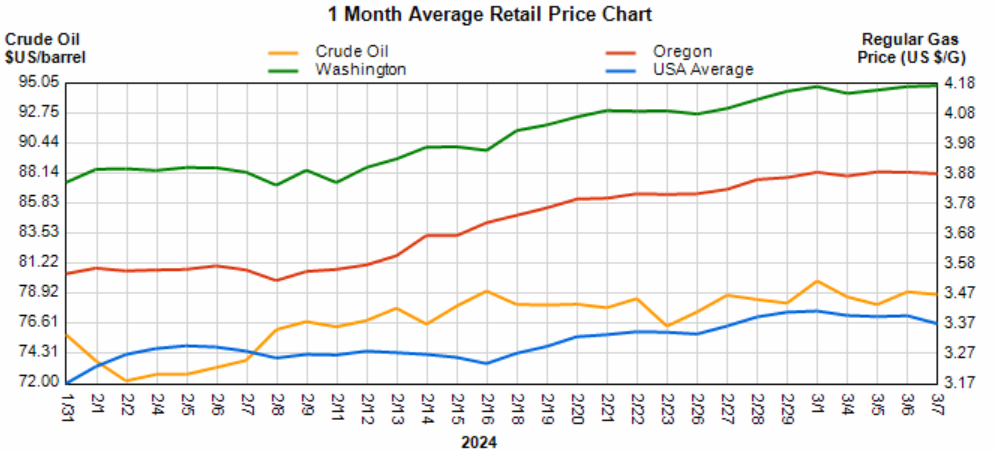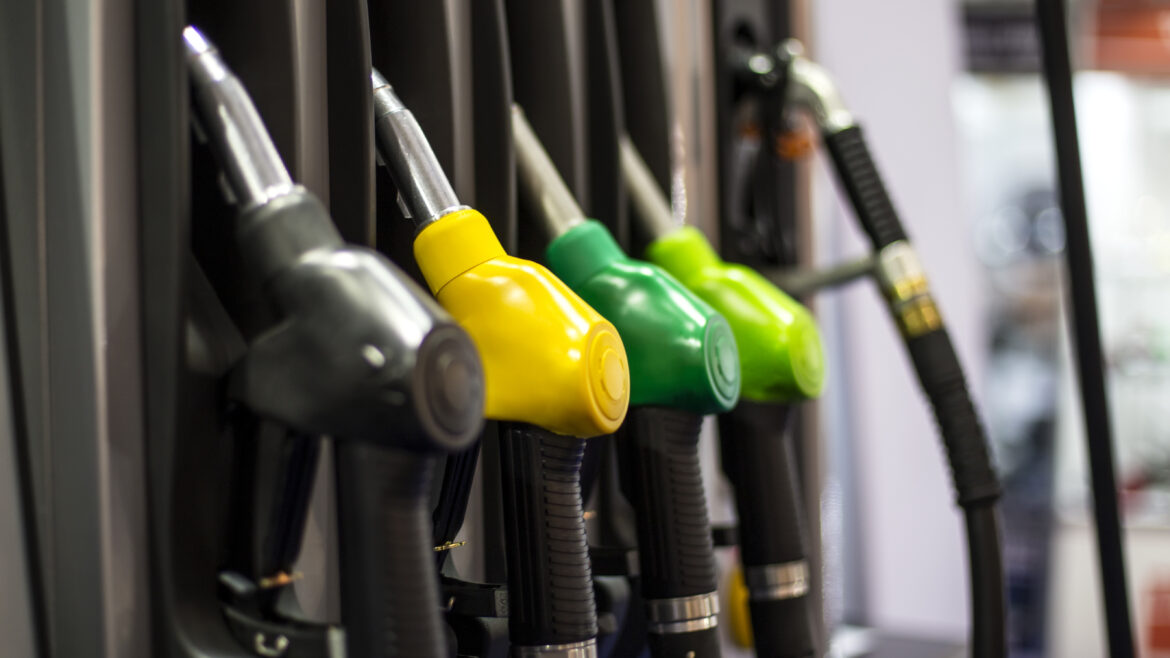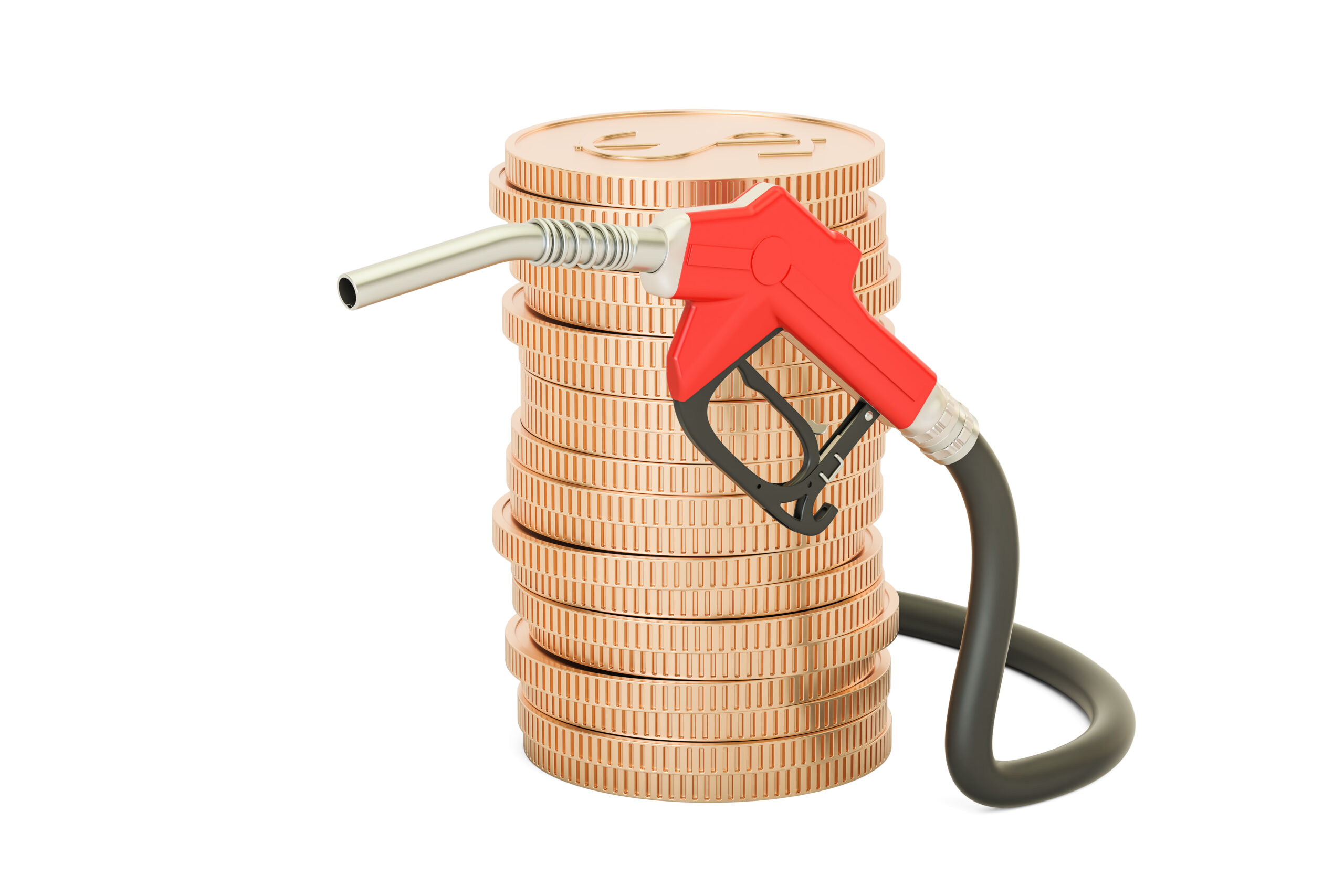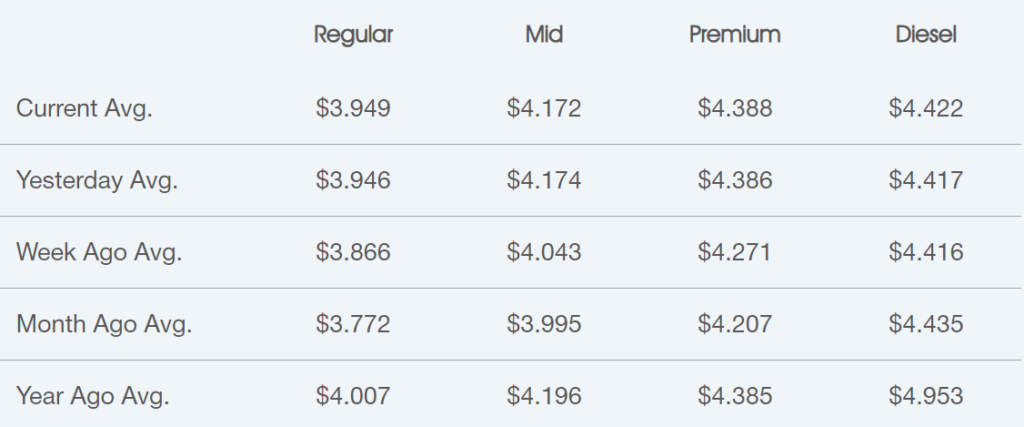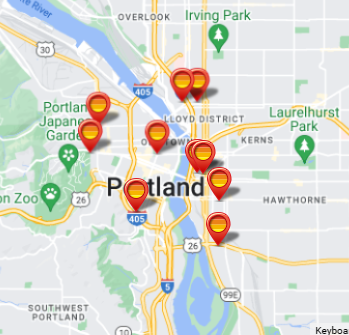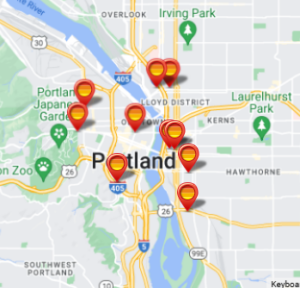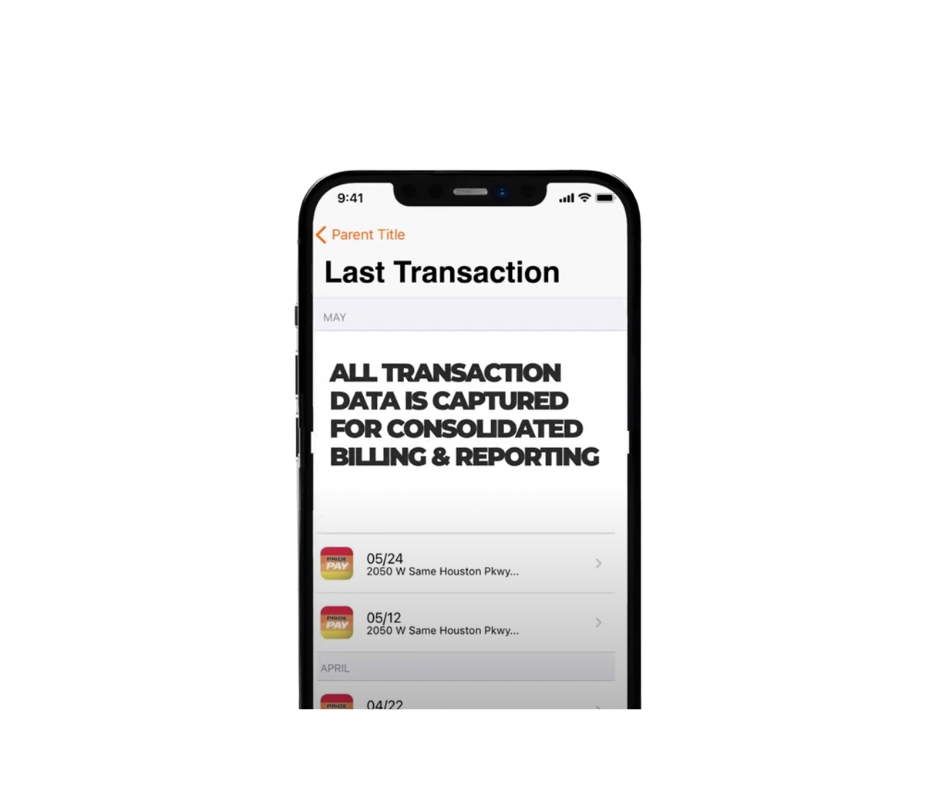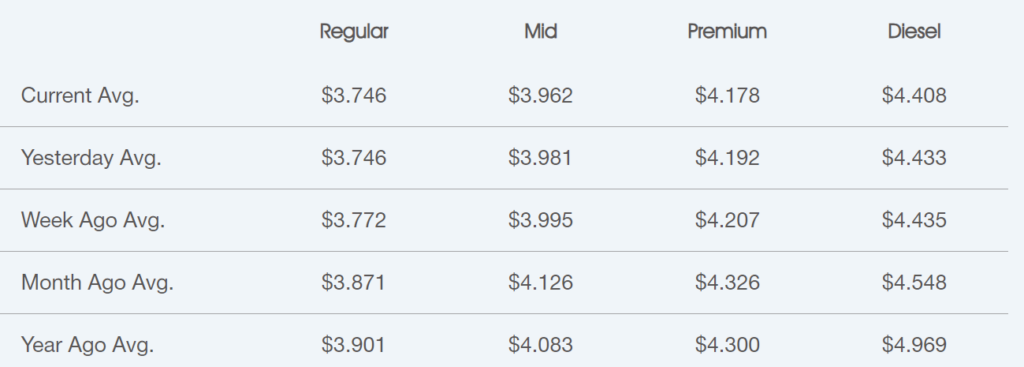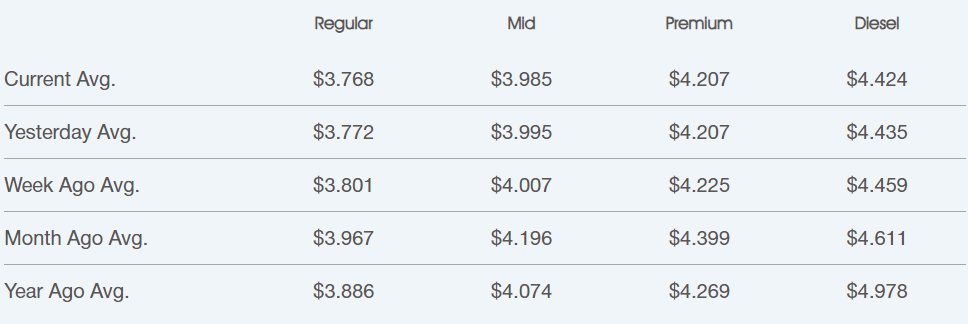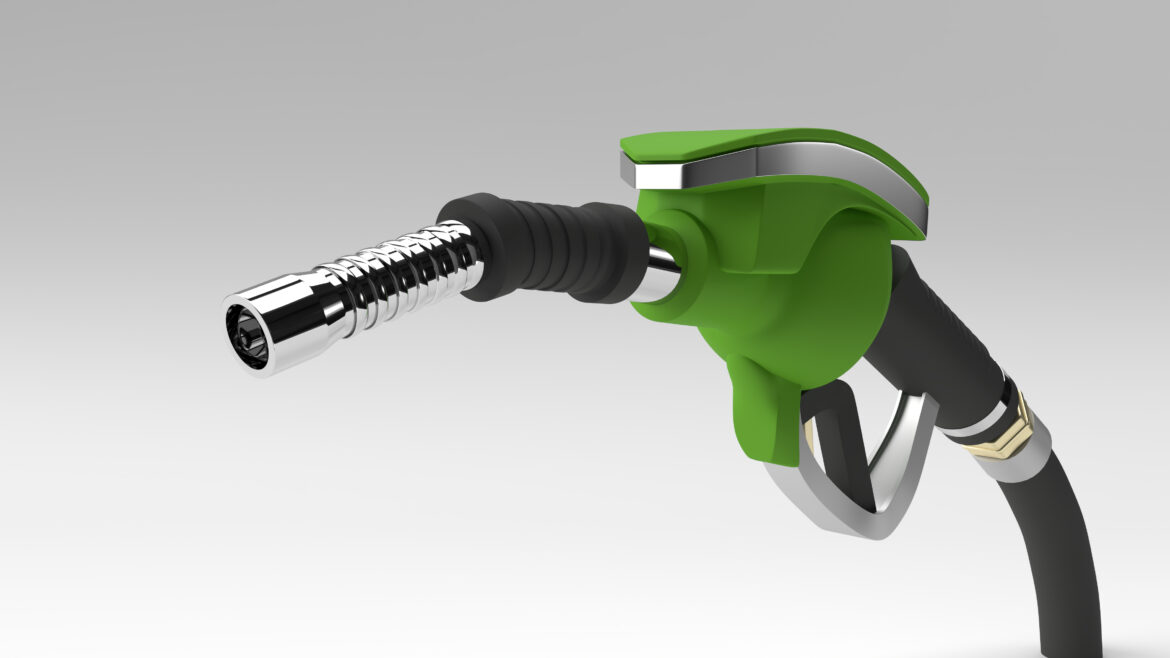Fuel Market Report: March 10th, 2024 – March 16th, 2024
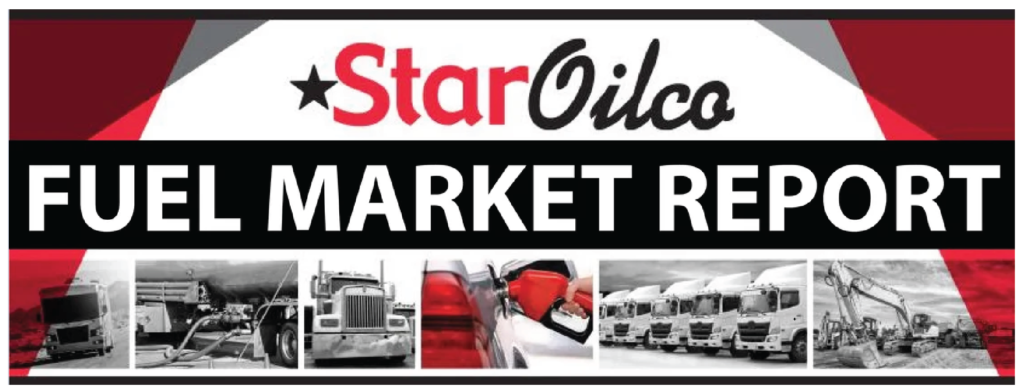
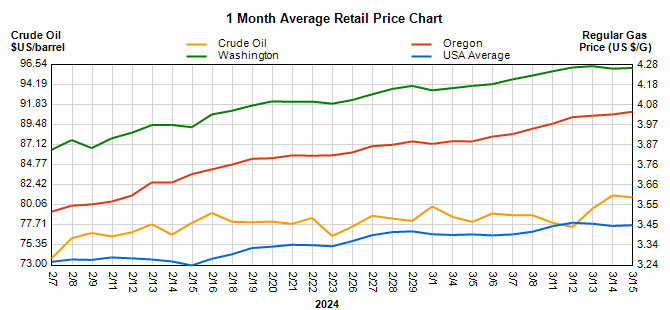



Oregon Fuel Price Variance

Fuel Market News
The diesel market jumped this week with prices increasing by $0.12 on the wholesale market, to an average of $2.66 as of Monday. B20 prices experienced minor fluctuations as rack average pricing fluctuated only $0.05. The gasoline market experienced the biggest spike this past week as rack average prices increased by $0.23 from the week prior.
As predicted last week, retail fuel prices in Oregon are averaging slightly over $4/gal with most stations in Portland hovering around $3.99-4.10. Oil prices have surpassed $80/barrel for the first time in months, which will play a major role in the uptick in fuel prices in the market. Consumers can expect fuel prices to increase as we enter the Spring season this week on March 19th with the summer fuel blend hitting the market.
Reasons For Lower Prices:
- Oil Prices Over $80, currently $82/barrel
- Winter Fuel Blend
- Summer Blend Of Fuel
- Increasing Demand For Gas
Crude oil is trading above $80 for the first time in months at a current price of $82.68/barrel. $4.55 higher than last week, as oil prices trended upward for the first time this month.
Crude oil is the main ingredient for gasoline and diesel. Per AAA, on average about 50% of what you pay at the pump is the price of crude oil, breaking down as 25% refining, 11% distribution & marketing, and 14% taxes—a helpful breakdown for consumers wondering why they are paying the prices that they pay. Crude Oil is trading at $82.68 per barrel compared to $78.13 last week and $84 a year ago.
It’s essential to recognize that fuel prices result from a complex interplay of the factors mentioned above and other factors regionally. Additionally, prices may vary by specific regions within Oregon and Washington. For the most precise and up-to-date information on fuel prices and the causes for these price changes within your area, use the links below for AAA & GasBuddy.
If you have any questions, feel free to contact Star Oilco and speak to one of our fuel market advisors to discuss how the market can impact your business.


